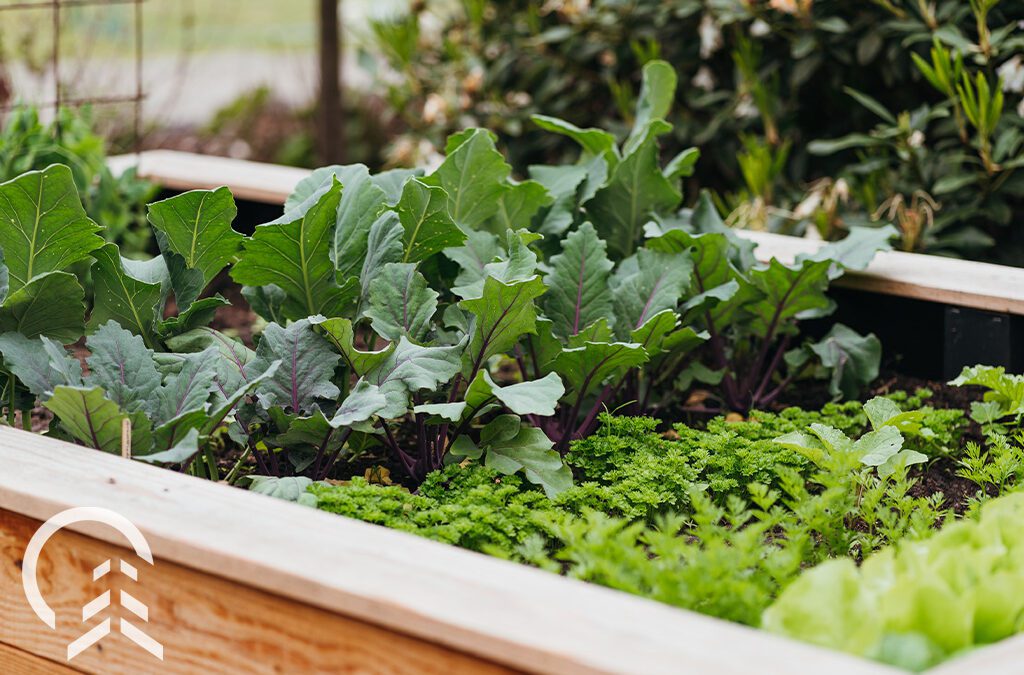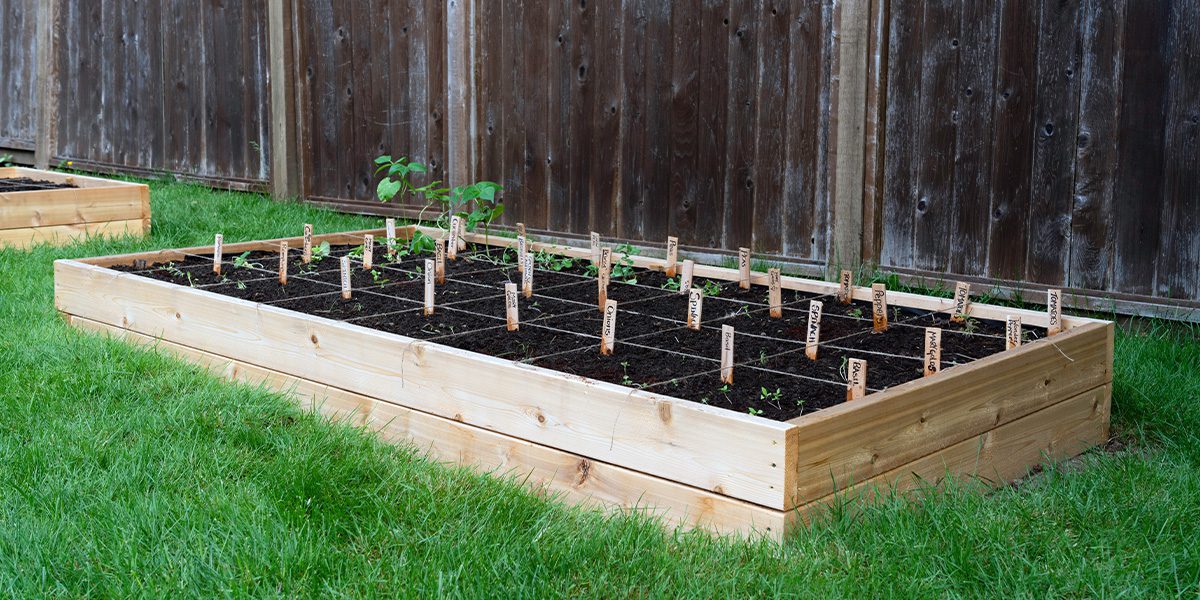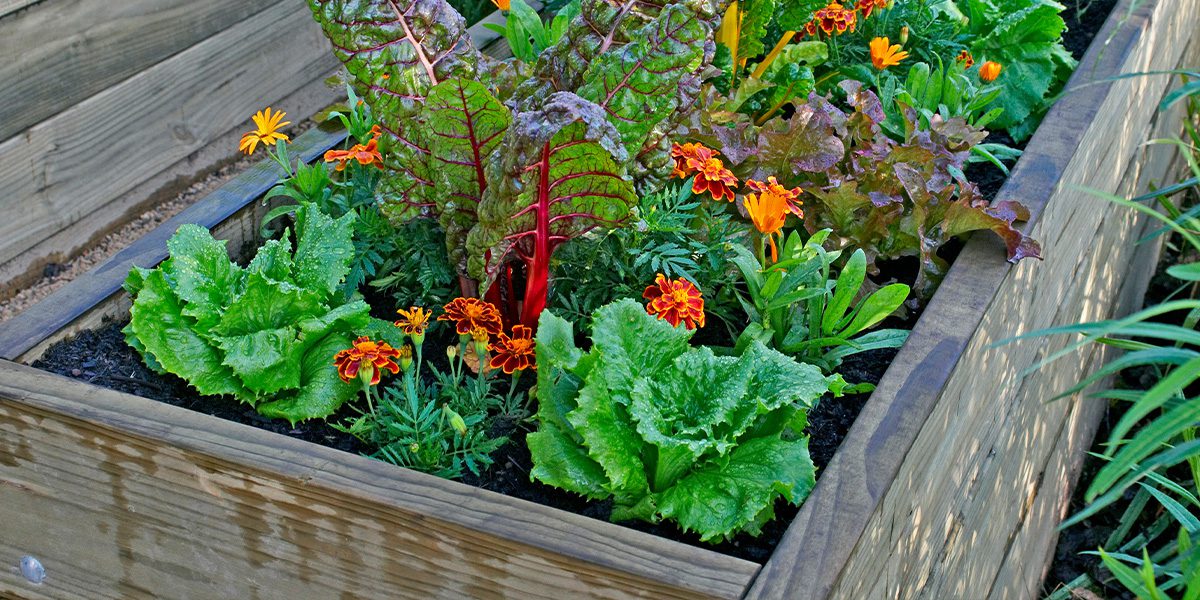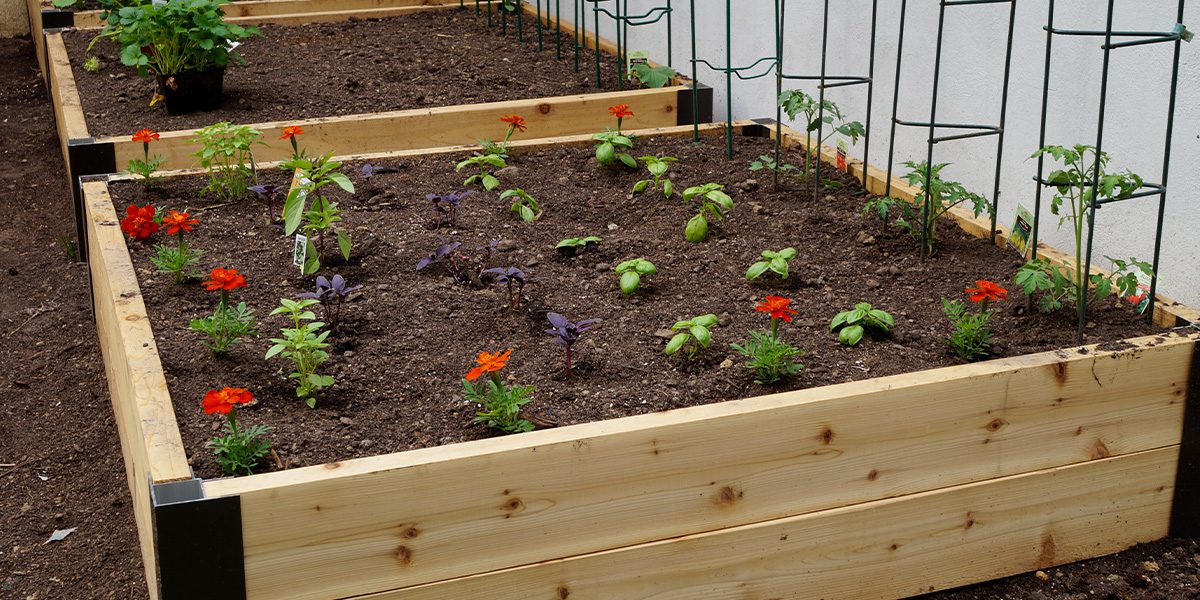Many gardeners put off planning until the last minute or don’t do it all. While it’s possible to improvise and still reap a bountiful harvest, planning your garden can make a world of difference. Planning ahead allows you to take advantage of companion planting, crop rotation, and a harvest schedule—all of which can reduce your workload and increase your yields. Here are some great ways to get a head start on planning your raised beds, and benefit from companion planting!
How to Use Space Wisely in Your Raised Beds
The first thing to consider is how to use the space in your raised beds. Do you want one sprawling pumpkin plant to take up all of your garden? Or, would you prefer tightly-spaced salad greens that give you a continual harvest? The main questions to ask are: what are the plants you want to grow, how much space do they need, and where can you grow them?
Keep in mind that some vegetables, like pole beans and indeterminate tomatoes, can climb upwards, freeing up space below, and squash can be trained to grow outwards onto the lawn. Also, remember to rotate your crops from year to year, so you’re not continuously growing them in the same spot in your garden. This makes them more resilient against pests and gives them access to fresh nutrients in a new area.
How to Plan for Multiple Harvests in a Raised Bed
Some garden vegetables, like kale, zucchini, Swiss chard, and tomatoes, offer a continual harvest once they start producing. Others—including lettuce, spinach, radishes, and beets—have a short growing period and a window when they’re ready to eat. With 30 to 60 days of growing time, you can replant them several times throughout the season. So, if you want a continual harvest of these crops, it’s wise to plan successive plantings through the season, e.g., one batch of these crops every 2-3 weeks.
How to Plan Your Garden for Companion Planting
Another huge upper hand in planning your garden is to take advantage of friendship among your plants, or what is officially called, companion planting. These companionships involve anything from repelling pests, to providing shade, and fixing nutrients in the soil, among other benefits. Here are some relationships to use when planning your raised garden beds:
Beets grow well alongside brassicas, bush beans, garlic, lettuce, and onions.
Broccoli does well with oregano (which repels pests,) and alongside beets, celery, lettuce, chamomile, and potatoes.
Cabbage is friends with nasturtiums, garlic, and sage.
Carrots thrive alongside chives, leeks, onions, peas, radishes, rosemary, and sage; but they don’t jive with other members of the carrot family, such as dill, coriander, and celery.
Cucumbers grow well near beans, borage, dill, lettuce, nasturtiums, oregano, radish, and sunflowers.
Kale thrives alongside companions of the onion family, which repel common pests like flea beetles, cabbage loopers, and aphids.
Lettuce is happy with chives, onions, oregano, peas, and radishes.
Onions are powerful companions that protect many plants against pests, including beets, cabbage, carrots, chard, kale, lettuce, strawberry, and tomatoes.
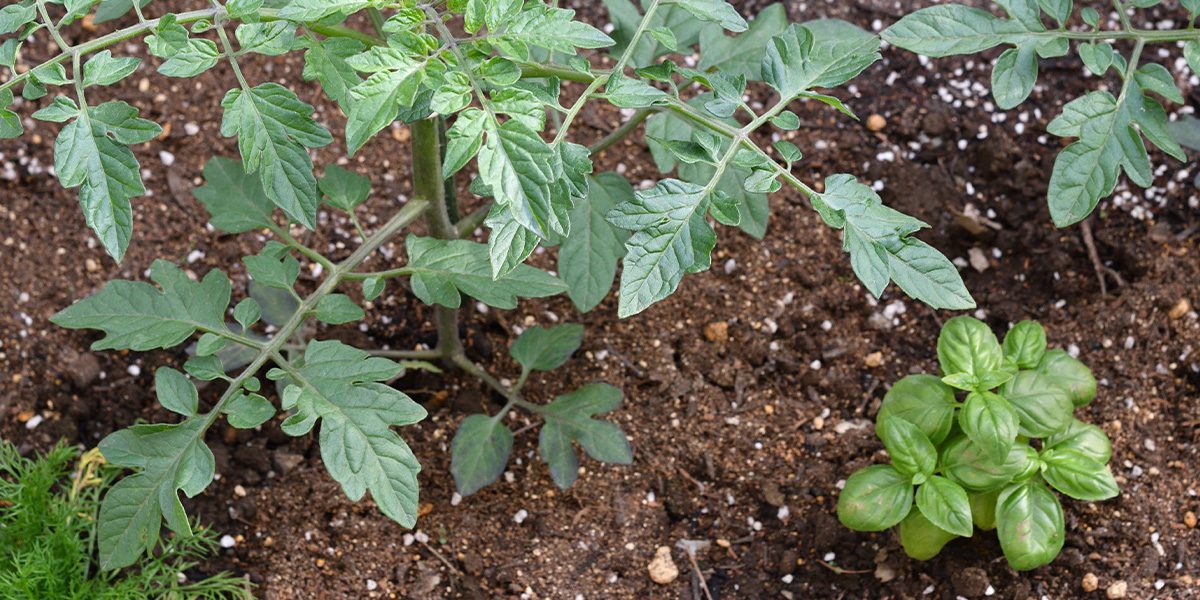
Tomatoes’ most famous companion is basil, which helps improve the flavor of the fruit. They also grow well alongside asparagus, borage, calendula, dill, garlic, nasturtium, onion, parsley, and thyme.
Peas grow better when planted near alyssum, carrots, chives, lettuce, mint, radish, spinach, and turnips; but onions close by can stunt the growth of peas.
Peppers thrive surrounded by pest-protecting herbs like basil, marjoram, onions, and oregano.
Potatoes increase their bounty near beans, and benefit from the protection of calendula, horseradish, garlic, oregano, and catmint.
Spinach benefits from the shade of peas and beans and the pest-repelling presence of cilantro, oregano, and rosemary.
Winter squash, zucchini, and pumpkins benefit from the presence of buckwheat, calendula, nasturtiums, and oregano which either deter pests or attract predatory insects to reduce pest populations.
Once you’re aware of these mutually-beneficial relationships, you can orchestrate your plantings to help your vegetables thrive and reduce their resilience against pests. The list above is by no means exhaustive, and we encourage you to research specific plants if you want to learn more about their best companions.
Remember to rotate your crops from year to year, so you’re not continuously growing them in the same spot in your garden. This makes them more resilient against pests and gives them access to fresh nutrients in a new area.
What Plants Should Not Be Planted Next to Each Other in a Raised Bed?
There are far more friends than foes among plants, but still, some partnerships just don’t work out. Tomatoes and potatoes, which are from the same family, compete for common resources when planted together, as do carrots, dill, celery, and other members of the carrot family. Members of the onion family—including onions, leeks, garlic, and shallots—will stunt the growth of peas.
Also, keep in mind that planting a lot of a single plant in one raised garden bed is like offering a buffet for any pests that feed on it. The same happens when you plant many vegetables of the same family, like brassicas, in one area—together they all attract the same pests. In general, remember to mix your plants in your raised beds to create more resilience against invading bugs.
How to Map Your Raised Garden Beds
With all of this information, you have the knowledge to create crop maps for your raised beds. Both a diagram and a planting calendar will come in handy to orchestrate your optimum planting design and schedule. Even with this plan, the gardening season will still throw some curveballs at you, and you’ll likely have to improvise. But even though your plans may change, it’s still essential to have a plan A from the beginning!
For any more tips on companion planting in your raised garden, feel free to visit our garden centers in Chicagoland!

